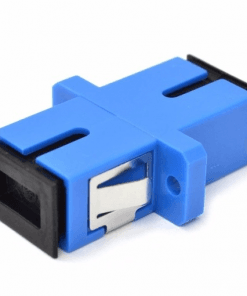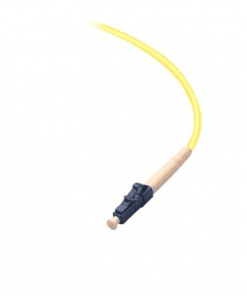DOWNLEAD CLAMPS FOR POLE ADSS AGY 1440-300
KSh 1,100.00 Original price was: KSh 1,100.00.KSh 1,080.00Current price is: KSh 1,080.00. excl. VAT
Visit our store and enjoy:
- Genuine, brand new, sealed stock
- Price-match against authorized dealers
- Installation & configuration services available
- Expert advice on compatibility with your network
Suspension Set ADSSS ACQ100/1330 Specifications And Details
Overview
Downlead clamp is also called downlead cushion, it is fixed on the pole or strain tower, guiding the optical cable to go through up or down. According to the application, the downlead clamp includes downlead clamp for towers, downlead clamp for poles, downlead clamp for ADSS, and downlead clamp for OPGW.
Downlead clamp for towers consists of a stainless steel band and a rubber part. The stainless steel band is used to fix the rubber clamp onto the pole. At the same time, the rubber part secures the optical fiber. This way, the optical fiber will not shake, while decreasing damages due to friction.
The downlead clamp for towers has a different construction from the downlead clamp for poles. The downlead clamp consists of a steel bracket, bolt and nut, and rubber part. The bolts will fasten the downlead clamp to the tower.
Compared to other downlead clamp manufacturers, Jingyoung delivers end-users with a large variety of downlead clamp design choices. Jingyoung can custom manufacture the downlead clamp with a broad cable range, various materials, and different attachment options.
Jingyoung downlead clamp provides outstanding durability and reliable performance across a variety of transmission lines and communication applications. Our downlead clamp features include board cable range, quick installation, smooth surface, and competitive price.
Jingyoung is an ISO certified manufacturer, supplier, and exporter based in China.
Components of Downlead Clamp
A downlead clamp is made up of the following key components:
Steel bracket
The steel bracket is at the bottom of the downlead clamp.
Its main duty is to ensure cables are well locked within.
This helps to prevent cables from coming out after installation.
When locked right, the steel bracket protects all cables.
Downlead Clamp bolt and nut
Bolt
The bolt in figure 4 is a part of the downlead clamp.
It is there to help lock cables on towers, poles.
If the bolt is not tightened well, the entire installation process will not be as firm as you need it to be.
It affects the process all the time.
Nut
The nut in the downlead clamp makes installation easier.
You need to make sure the right nut is what you use.
Rubber Section
Downlead clamp with rubber section
The rubber section helps to prevent cables from scratches or abrasions.
You should have bolts and nuts tightened rightly to make sure the rubber section doesn’t loosen up.
How to Install Downlead Clamp
Well, the process of installing a downlead clamp is not as complicated as you may think.
However, you must be keen and cautious to install it the right way.
Let’s see how you can achieve this:
- You begin by detaching bolts and nuts from the downlead clamp. Make sure you do not forcefully detach them to prevent them from getting damaged.
- Hold the pole or tower with the clamp part of the downlead clamp.
- At the same time, insert the cables in the holes of the downlead clamp. Do this carefully to prevent possible abrasion.
- Assemble the downlead clap together.
- Have the bold and nuts fastened.
- Make sure it is fastened tightly so that cables aren’t loosening up. This helps to make cables intact.
As you install the downlead clamp, ensure you use the right size and specification.
This is critical to ensure a downlead clamp serves the intended purpose.
Of course, by the end of the process, both bolts and nuts should be tight.
Highlights
- It has been designed to come with slip strength
- There is a steel tower guide clamp that comes with adapters to get rid of drilling issues. This makes it simple and easy to install.
- Lattice adapters come with break-away bolts to ensure specific torque during installations.
- Downlead clamps are very easy and quick to install.
- They provide the right spacing and hold strength to prevent cable damages.
- From towers to poles, downlead clamps offer a complete line of optical ground wire from the highest level to the splice boxes.
Most people have realized the uniqueness of downlead clamps that is why they use this accessory.
You can use a downlead clamp in many applications such as:
Downlead clamp for poles; downlead clamp for pole is mostly the steel banding type.
This is also used to guide cables from the pole to be tightly fixed to prevent abrasion.
Tech Specification
Downlead Clamp Specifications
Whenever you’re buying downlead clamp, you should ensure they meet the following specifications:
- The downlead clamp for the tower includes a stainless steel band and a rubber part.
- The stainless steel band of the downlead clamp fixes the rubber clamps onto these poles.
- Also, the rubber part of the accessory secures the optical fibers. This ensures that optical fibers aren’t shaken while reducing damage caused by friction.
- Downlead clamp for towers come with unique construction compared to that for poles.
- This accessory consists of steel brackets, bolts and nuts, and rubber parts. These bolts ensure the downlead clamp is firmly fastened to the tower.
| Product Specifications : downlead clamp for tower | |||
| Code | Cable diameter(mm) | WEIGHT(KG) | Material |
| JYTC-05-B | 9.0-13.3 | 0.8 | Rubber, Galvanized steel |
| JYTC-07-B | 13.4-17.7 | 0.8 | Rubber, Galvanized steel |
| JYTC-10-B | 17.8-19.7 | 0.8 | Rubber, Galvanized steel |

Be the first to review “DOWNLEAD CLAMPS FOR POLE ADSS AGY 1440-300” Cancel reply
You must be logged in to post a review.
Related products
D-Link Store Kenya
D-Link Store Kenya
Fibre Optic Accessories
Fibre Optic Accessories
Fibre Optic Accessories
Fibre Optic Accessories



















Reviews
There are no reviews yet.